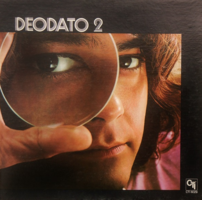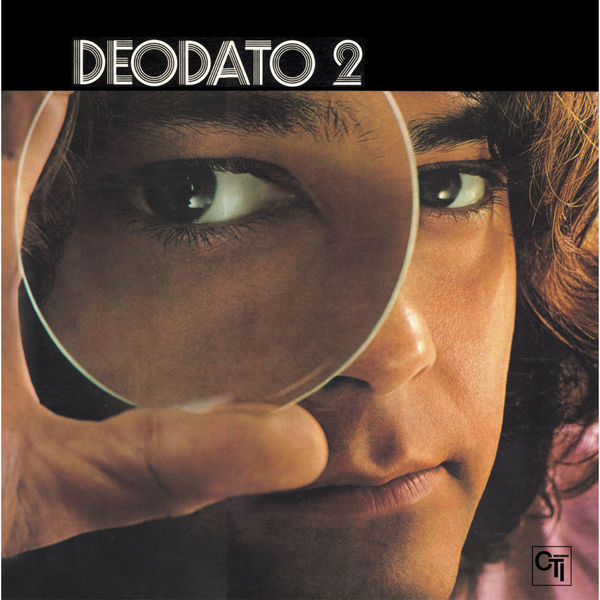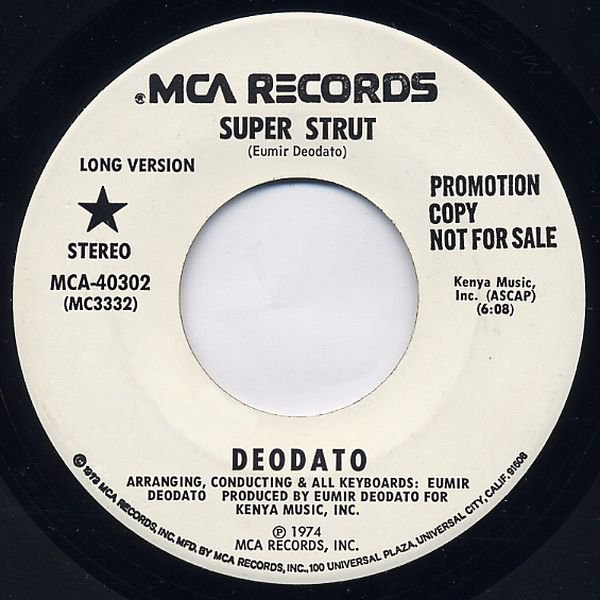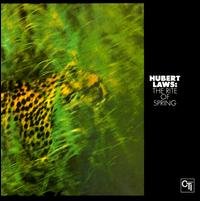 Deodato: Deodato 2
Deodato: Deodato 2CTI Records CTI 6029
Released 1973
Pictured at right
Assigned CTI 8025 for reissue, but never released
A1: Nights In White Satin [6:00]
A2: Pavane For A Dead Princess [4:30]
A3: Skyscrapers [6:35]
B1: Super Strut [8:55]
B2: Rhapsody In Blue [8:50]
Arco Bass – Alvin Brehm, Russell Savakus
Arranged By, Conductor – Eumir Deodato
Baritone Saxophone – Joe Temperley
Bass – John Giulino, Stanley Clarke
Bass Trombone – Tony Studd
Cello – Alan Shulman, Charles McCracken, George Ricci
Design [Album] – Bob Ciano
Drums – Billy Cobham, Rick Marotta
Engineer, Mastered By – Rudy Van Gelder
Flute – George Marge, Hubert Laws, Jerry Dodgion, Romeo Penque
French Horn – Brooks Tillotson, Jim Buffington
Guitar – John Tropea
Keyboards – Eumir Deodato
Mastered By – Rudy Van Gelder
Percussion, Congas – Gilmore Degap, Rubens Bassini
Photography By [Back Cover & Liner] – Duane Michals
Photography By [Front Cover] – Alen MacWeeney
Producer – Creed Taylor
Trombone – Garnett Brown, Wayne Andre
Trumpet – Burt Collins, Joe Shepley, Victor Paz
Trumpet, Flugelhorn – Alan Rubin, Jon Faddis, Marvin Stamm
Viola – Alfred Brown, Emanuel Vardi
Violin – David Nadien, Elliot Rosoff, Emanuel Green, Gene Orloff, Harold Kohon, Harry Cykman, Harry Glickman, Harry Lookofsky, Irving Spice, Joe Malin, Max Ellen, Paul Gershman
Recorded April, May 1973 at Van Gelder Studios
Note: the Qobuz version, and some CD versions, swap(s) the track order and adds three bonus tracks (two penned by Deodato, the third by Becker/Fagen):
- Super Strut [9:29]
- Rhapsody In Blue [8:43]
- Nights In White Satin [6:01]
- Pavane For A Dead Princess [4:24]
- Skyscrapers [7:00]
- Latin Flute [4:19]
- Venus [3:28]
- Do It Again [5:30]
Amazon product ASIN B002HI70BK

Deodato 2, Deodato - Qobuz
Listen to unlimited streaming or download Deodato 2 by Deodato in Hi-Res quality on Qobuz. Subscriptions from $10.83/month.

Deodato - Deodato 2
Explore songs, recommendations, and other album details for Deodato 2 by Deodato. Compare different versions and buy them all on Discogs.
 www.discogs.com
www.discogs.com
Last edited:





